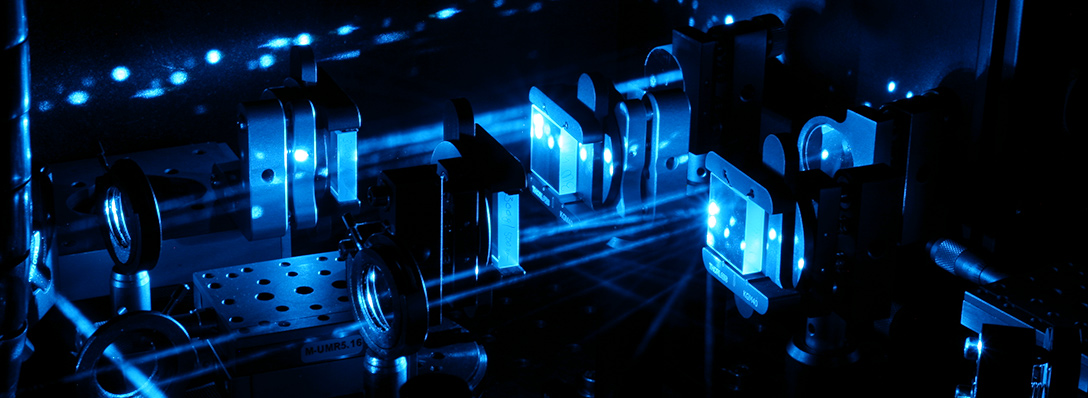Main content
Top content

Holographic Ultrafast Spectroscopy
In lithium niobate the small polaron formation occurs below 100 fs (femtosecond) at normal temperature. The small polaron might be the reason for optical damage, and therfore is of high relevance in the field of photonics. Together with the near-instantaneous \(\chi^{(3)}\)-nonlinearities, like two-photon absorption and nonlinear refraction, the polaron formation is a dominant part during the optical excitation with femtosecond laser pulses in the blue-green spectral range.
A four-wave-mixing setup has been implemented which uses the holographic principle for recording an elemental grating with two waves. A third wave and its Bragg matched diffraction (fourth wave) are used to record the grating buildup and decay in the femtosecond and millisecond time regime. The grating formation is based on near-instantaneous \(\chi^{(3)}\)-nonlinearities and a long lasting polaronic contribution up to milliseconds. Additional to the number density modulation of polarons, a space-charge field is generated that improves significantly the hologram efficiency due to the Pockels effect. By the use of different fs-pulse durations the mobility of polarons and the buildup of the space-charge field can be studied.
As a new method to investigate the ultrafast response of the medium, nondegenerated recording waves are used, the so called two color holography. In this case the grating moves spatially in the order of the speed of light, so that only processes with a comparable response time can record a grating. This could offer a new possibility to get access to time constants shorter then the pulse duration. The diffraction from such a moving grating shows a frequency shift relating to the fundamental waves comparable to the Doppler effect.
The transient pump-probe setup is a basic technique to get information about the photoexcitation of charge carriers. Here, the different nonlinearities during the excitation can lead to an amplification of the weak probe-beam and gain coefficients \(\gamma\) > 100/cm are observed. This pronounced values are interesting to control light with light. The present work gives evidence for a grating based coupling as well.

